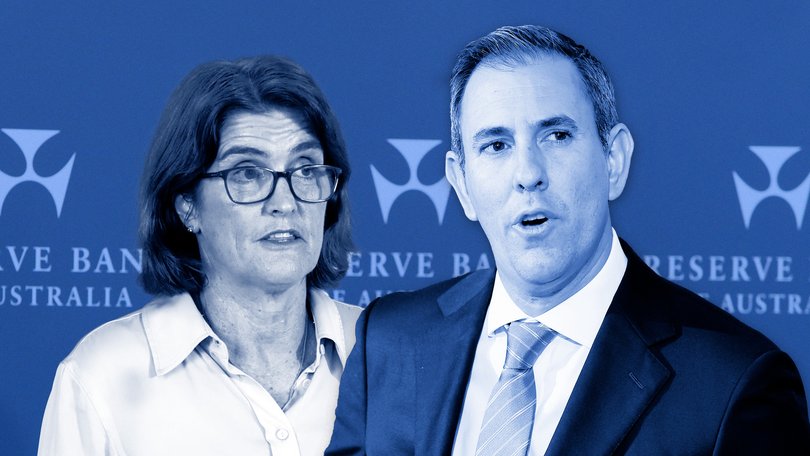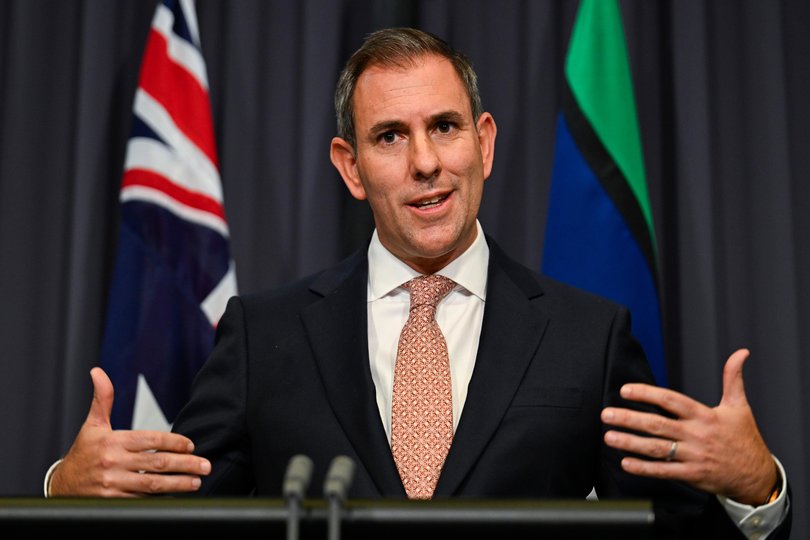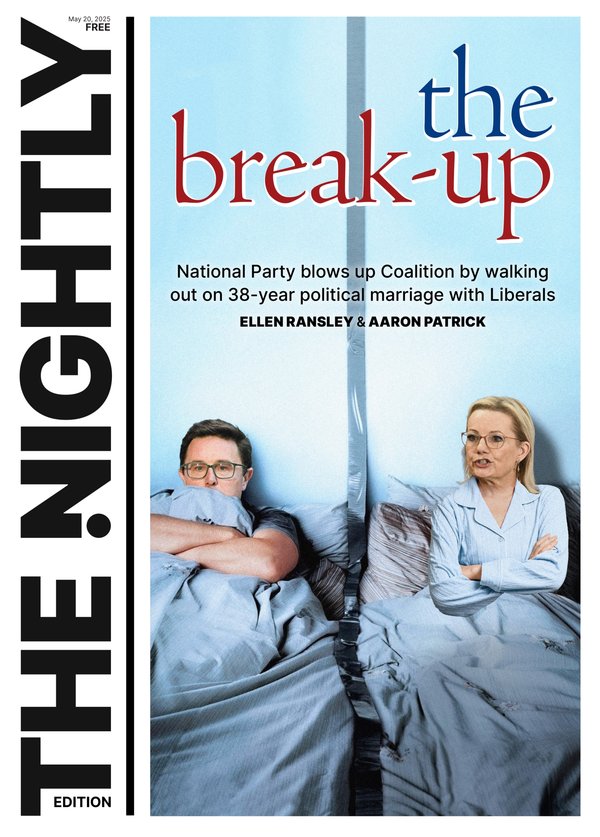May Interest Rates cut: RBA has delivered 2025’s second rate reduction but urges caution with business blues

The Reserve Bank of Australia has said it will “respond decisively” if global trade tensions disrupt the economy, as it handed down the second rate cut this year.
The 0.25 per cent reduction brings the official interest rate to 3.85 per cent, its lowest level since May 2023.
Governor Michele Bullock said the current turmoil, sparked by Donald Trump’s trade war, would crimp growth in Australia by 0.3 per cent, with the Bank forecasting gross domestic product to fall from a predicted 2.4 per cent in December to 2.1 per cent.
Sign up to The Nightly's newsletters.
Get the first look at the digital newspaper, curated daily stories and breaking headlines delivered to your inbox.
By continuing you agree to our Terms and Privacy Policy.Ms Bullock said the ‘consensus’ decision resulted in a “confident cut” based on the available data, but that uncertainty clouded the future.
“Uncertainty” was mentioned 122 times in the RBA’s 67-page Statement on Monetary Policy, which modelled three separate scenarios of the economic impact of tariffs.
Under one of those scenarios, the Bank said it had considered a “severe downside scenario” where a trade war would have “material implications” for growth and inflation.
“Monetary policy is well placed to respond decisively to international developments,” the Bank said.
While the Bank has seen only a moderate hit to global growth so far, the reduction in momentum has made it more confident about the inflation outlook, which is forecast to settle within the 2 to 3 per cent target band. Slower growth would also take some pressure off the tight labour market.
Treasurer Jim Chalmers described the cut as a “very welcome decision” that would benefit millions of mortgage holders.
“This decision does reflect the substantial progress we’ve made on inflation, but also that we haven’t had to pay for that progress with substantially higher unemployment or a substantially slower economy. That makes us unusual around the world,” Dr Chalmers said.

But the Bank revealed that business continues to feel the impact of higher wage and energy costs, warning that firms are struggling to find staff and are contending with unproductive workers driving up unit labour costs, while many lack the ability to pass those costs on.
“What we’re hearing from our liaison is that businesses are finding that their margins are being impacted, so they are having to absorb some of the cost increases,” Ms Bullock said.
Australian Chamber of Commerce and Industry chief executive Andrew McKellar said the cut would provide much-needed relief for small businesses in particular.
“Businesses have been facing significant challenges, and rises in insolvencies are just one indicator of the continuing pressures faced by business owners,” Mr McKellar said.
Australian Industry Group chief executive Innes Willox warned that the uncertain global outlook made economic reform all the more important.
“The RBA has downgraded its forecast for growth, inflation and employment through to the end of 2026 due to these global downside risks,” Mr Willox said.
“Meanwhile, many of our structural economic problems – stagnant productivity, chronic housing and skills shortages, and rising public debt levels – remain in place.”
Devika Shivadekar, economist at business advisory firm RSM Australia, said her firm’s clients had been struggling with higher unit labour costs due to poor productivity, and that the rate cut could give businesses confidence to invest.
“While the immediate benefit is lower borrowing costs, the move could also help tackle a deeper issue: the lack of investment in tools and technology that boost output,” Ms Shivadekar said.
Banks pass on cuts
The big four banks wasted no time passing through the cut, with NAB issuing a notice of rate changes within one minute of the policy release.
Combined with February’s quarter-percentage-point reduction, today’s cut means a mortgage holder could save an extra $178 per month on a $500,000 home loan, equivalent to $2,136 per year.
So far, however, those rate cuts haven’t flowed through to consumption, with National Australia Bank revealing that 95 per cent of customers have opted to keep repayments at the same level since February to pay down their loans faster.
Ms Bullock acknowledged that mortgage stress appeared to have made consumers cautious, noting that despite the lift in household income from wage rises and the previous rate cut, spending has yet to rebound.
“We would expect consumption to be picking up, (but) it’s a little bit slower than we thought given historical circumstances. Households are being a little bit cautious,” she said.
“We’ve been surprised consumption hasn’t recovered as real incomes are starting to recover.”
Ms Bullock was asked whether she was concerned that the rate cut would put housing further out of reach for first home-buyers, following research suggesting that every 1 per cent cut in rates leads to a 6 per cent rise in national house prices.
Her view was that it was not in the Bank’s purview to assess housing affordability, calling it an “issue of housing demand and housing supply.”
“This didn’t just pop up overnight. This has been brewing for many years, and there’s nothing that the Bank can do about this,” Ms Bullock said.
“We’ve got to focus on our inflation and our employment mandate, which is actually a really good thing we can do for young people and renters – keep inflation low and make sure they have jobs.
“What governments can do is look at the supply-demand imbalance in housing, and I’m confident now that at least there is some focus in that direction.”
Housing Industry Association senior economist Tom Devitt said the rate cut “will act as a catalyst for more on-the-ground home building activity,” but warned that state governments needed to usher in reforms to taxation, financing, and construction rules if they wanted to improve housing supply.
“These two cuts will be very helpful in getting more aspiring home buyers across the line and into their own home. Reduced mortgage costs will provide an added boost and potentially also bring some of the lagging states back to the table,” he said.
More rate cuts expected
Most bank economists forecast at least two more cuts this year, describing Ms Bullock’s statement as “less hawkish” than the previous rate decision.
Westpac chief economist Luci Ellis said the bank expects rates to fall to 3.35 per cent by year’s end, while National Australia Bank’s Sally Auld predicted three cuts for a terminal rate of 3.1 per cent.
The ASX 200 was relatively unchanged on the day, rising just 0.58 per cent on the widely expected news, while the Australian dollar fell 0.48 per cent.

